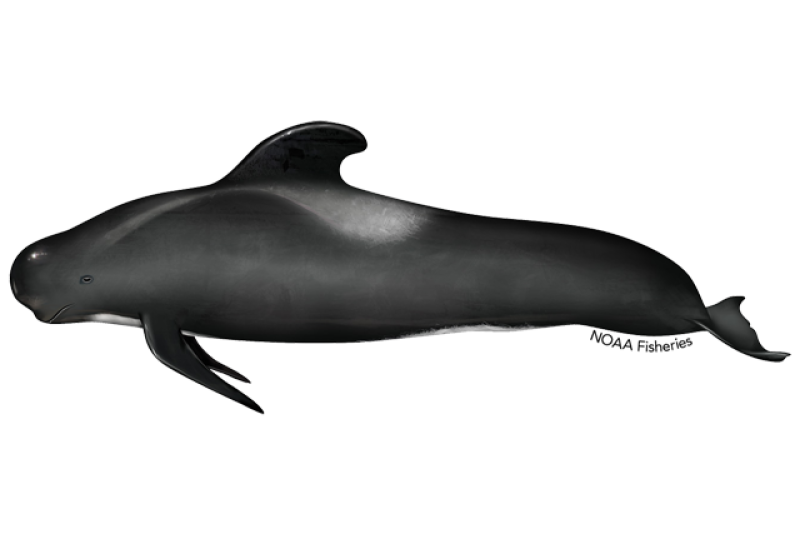Melon-Headed Whale
Peponocephala electra
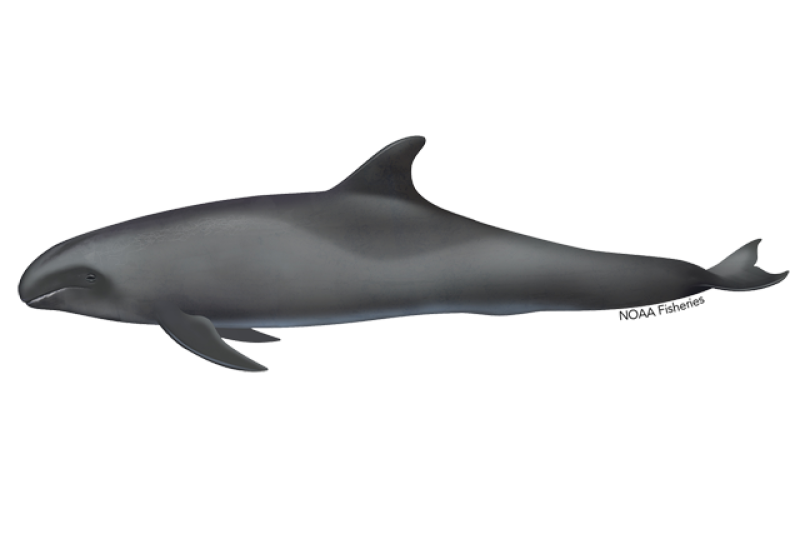
Protected Status
Quick Facts
 A group of melon-headed whales swimming in the ocean. Credit: NOAA Fisheries
A group of melon-headed whales swimming in the ocean. Credit: NOAA Fisheries
A group of melon-headed whales swimming in the ocean. Credit: NOAA Fisheries
About the Species
 A group of melon-headed whales swimming in the ocean. Credit: NOAA Fisheries
A group of melon-headed whales swimming in the ocean. Credit: NOAA Fisheries
A group of melon-headed whales swimming in the ocean. Credit: NOAA Fisheries
Melon-headed whales are a robust small whale found primarily in deep, tropical waters worldwide. They are social animals and often occur in groups of hundreds to over 1,000 individuals. They likely maintain a matrilineal social structure, where females remain in groups with their mother and sisters, and males move between groups. At birth, melon-headed whales are approximately 3 feet long and grow to 9 feet long, with males reaching greater lengths than females.
Melon-headed whales can be confused with pygmy killer whales and false killer whales, to whom they are closely related.
Melon-headed whales, like all marine mammals, are protected under the Marine Mammal Protection Act.
Population Status
Population estimates for melon-headed whales vary by location. The most recent stock assessment reports with population estimates for the United States are available on our website.
Appearance
Melon-headed whales have a small head with a rounded melon and no discernible beak. Their dorsal fin is relatively large and they have pointed, tapering flippers (pectoral fins). Their body color is dark with a large dorsal cape and dark areas on the side of the face that are not always easy to see.
Behavior and Diet
Melon-headed whales often occur in groups of hundreds to over 1,000 animals. Smaller, coordinated subgroups are common within the larger groups. They are often associated with schools of Fraser's dolphins and have been sighted in mixed schools with spinner dolphins, bottlenose dolphins, rough toothed dolphins, short-finned pilot whales, and spotted dolphins.
Melon-headed whales make fast, low leaps from the water as they swim. This species tends to rest in the morning, socialize in the afternoon, and forage at night on fish, squid, cuttlefish, and shrimp.
Where They Live
Melon-headed whales are found primarily in deep waters throughout tropical areas of the world. In the United States, there are four distinct populations. Based on photo identification, satellite telemetry tag, and genetic research, we believe there are two populations of melon-headed whales in Hawaii—a large population that moves frequently among the islands that uses deep waters (4,600 to 6,000 feet deep), and a small population resident to the island of Hawaii that uses shallower waters (500 to 1,300 feet deep). There is also a population that lives in the Gulf of America (formerly Gulf of Mexico) and the offshore waters of the southeastern United States.
Lifespan & Reproduction
Female melon-headed whales reach sexual maturity at approximately 7 years of age while males mature later, between 12 and 15 years of age. The gestation period is approximately 12 months and females give birth every 3 to 4 years. Melon-headed whales can live up to 45 years.
Threats
Fisheries Interactions
Small numbers of melon-headed whales have been killed in directed harpoon or drive fisheries in the Philippines and Japan, respectively. They are also occasionally caught incidentally in tuna purse seine nets in the eastern tropical Pacific and in drift net fisheries in the Philippines, Indonesia, India, Malaysia, West Africa, and the Caribbean.
Ocean Noise
Underwater noise threatens whale populations, interrupting their normal behavior and driving them away from areas important to their survival, such as feeding and breeding grounds. Increasing evidence suggests that exposure to intense underwater sound in some settings may cause some whales to strand and ultimately die.
Pollution
In Japan, heavy metal and man-made chemical concentrations (e.g., perfluorocarbons and flame retardants) in melon-headed whales have increased over time. Concentrations of polychlorinated biphenyls (PCBs) in melon-headed whales in Hawaii and Japan are at levels thought to cause toxic effects.
Scientific Classification
| Kingdom | Animalia | Phylum | Chordata | Class | Mammalia | Order | Cetacea | Family | Delphinidae | Genus | Peponocephala | Species | electra |
|---|
Last updated by NOAA Fisheries on 02/26/2025
What We Do
Conservation & Management
NOAA Fisheries is committed to the protection and recovery of melon-headed whales. Targeted management actions taken to secure protections for these whales include:
- Minimizing the effects of noise disturbance
- Responding to stranded melon-headed whales
- Educating the public about melon-headed whales and the threats they face
- Monitoring population abundance and distribution
Science
Our research projects have discovered new aspects of melon-headed whale biology, behavior, and ecology and helped us better understand the challenges that all melon-headed whales face. This research is especially important in maintaining stable populations. Our work includes:
- Stock assessments
- Measuring the response of animals to sound using digital acoustic recording tags
How You Can Help
Report Marine Life in Distress
Report a sick, injured, entangled, stranded, or dead animal to make sure professional responders and scientists know about it and can take appropriate action. Numerous organizations around the country are trained and ready to respond. Never approach or try to save an injured or entangled animal yourself—it can be dangerous to both the animal and you.
Learn who you should contact when you encounter a stranded or injured marine animal
Keep Your Distance
Be responsible when viewing marine life in the wild. Observe all dolphins and porpoises from a safe distance of at least 50 yards and limit your time spent observing to 30 minutes or less.
Report a Violation
Call the NOAA Fisheries Enforcement Hotline at (800) 853-1964 to report a federal marine resource violation. This hotline is available 24 hours a day, 7 days a week for anyone in the United States.
You may also contact your closest NOAA Office of Law Enforcement field office during regular business hours.
Featured News
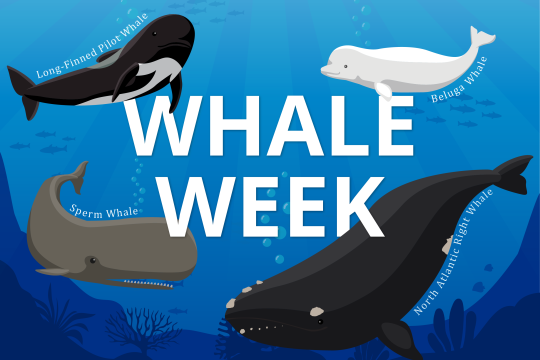
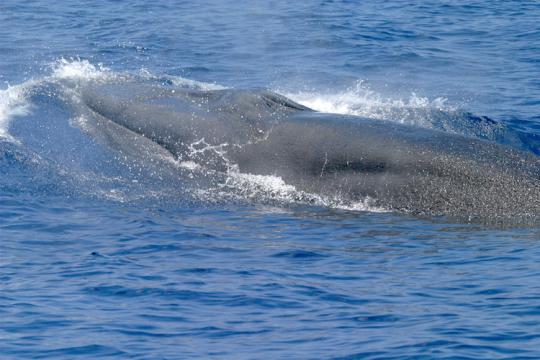 Rice's Whale. Credit: NOAA Fisheries
Rice's Whale. Credit: NOAA Fisheries
Protecting Species While Planning for Offshore Wind Development in the U.S. Gulf of Mexico
 Pilot whales surface near the NOAA Ship Gordon Gunter. Credit: NOAA Fisheries/Melody Baran (Permit # 14450)
Pilot whales surface near the NOAA Ship Gordon Gunter. Credit: NOAA Fisheries/Melody Baran (Permit # 14450)
 Deceased dolphin as a result of domoic acid poisoning. Credit: Channel Islands Marine & Wildlife Institute
Deceased dolphin as a result of domoic acid poisoning. Credit: Channel Islands Marine & Wildlife Institute
Toxic Algal Bloom Suspected in Dolphin and Sea Lion Deaths in Southern California
Management Overview
The melon-headed whale is protected throughout its range under the Marine Mammal Protection Act.
Additionally, the melon-headed whale is listed under:
- Appendix II of the Convention on International Trade in Endangered Species of Wild Fauna and Flora (CITES)
Annex II of the Protocol for Specially Protected Areas and Wildlife (SPAW)
Conservation Efforts
Reducing Vessel Strikes
Collisions between whales and large vessels can injure or kill the whales and damage the vessels, but they often go unnoticed and unreported. The most effective way to reduce collision risk is to keep whales and vessels apart. If this is not possible, second best is for vessels to slow down and keep a lookout.
Learn more about reducing vessel strikes
Addressing Ocean Noise
Underwater noise threatens whale populations, interrupting their normal behavior and driving them away from areas important to their survival. Increasing evidence suggests that exposure to intense underwater noise in some settings may cause some whales to strand and ultimately die. NOAA Fisheries is investigating all aspects of acoustic communication and hearing in marine animals, as well as the effects of sound on whale behavior and hearing. In 2016, we issued technical guidance for assessing the effects of anthropogenic sound on marine mammals’ hearing.

Overseeing Marine Mammal Health and Stranding Response
We work with volunteer networks in all coastal states to respond to marine mammal strandings including all whales. When stranded animals are found alive, NOAA Fisheries and our partners assess the animal’s health and determine the best course of action. When stranded animals are found dead, our scientists work to understand and investigate the cause of death. Although the cause often remains unknown, scientists can sometimes attribute strandings to disease, harmful algal blooms, vessel strikes, fishing gear entanglements, pollution exposure, and underwater noise. Some strandings can serve as indicators of ocean health, giving insight into larger environmental issues that may also have implications for human health and welfare.
Learn more about marine wildlife strandings and response
Marine Mammal Unusual Mortality Events
Melon-headed whales have been part of a declared unusual mortality event in the past. Under the Marine Mammal Protection Act, an unusual mortality event is defined as "a stranding that is unexpected; involves a significant die-off of any marine mammal population; and demands immediate response." To understand the health of marine mammal populations, scientists study unusual mortality events.
Get information on active and past UMEs
Get an overview of marine mammal UMEs
Educating the Public
NOAA Fisheries aims to increase public awareness and support for melon-headed whale conservation through education, outreach, and public participation. We regularly share information with the public about the status of melon-headed whales, as well as our research and efforts to promote their conservation.
Key Actions and Documents
Last updated by NOAA Fisheries on 02/26/2025
Science Overview
NOAA Fisheries conducts various research activities on the biology, behavior, and ecology of the melon-headed whale. The results of this research are used to inform management decisions for this species.
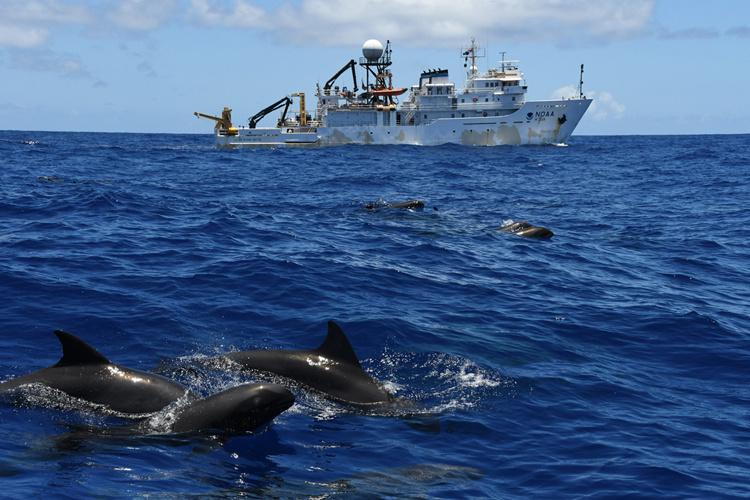
Stock Assessments
Determining the number of melon-headed whales in each population—and whether a stock is increasing or decreasing over time—helps resource managers assess the success of enacted conservation measures. Our scientists collect information and present these data in annual stock assessment reports.

Acoustic Science
Other research is focused on the acoustic environment of cetaceans, including melon-headed whales. Acoustics is the science of how sound is transmitted. This research involves increasing our understanding of the basic acoustic behavior of whales, dolphins, and fish; mapping the acoustic environment; and developing better methods to locate cetaceans using autonomous gliders and passive acoustic arrays.
NOAA Fisheries researchers use acoustics to monitor hearing levels and feeding behavior of melon-headed whales. We also study how underwater noise affects the way melon-headed whales behave, eat, interact with each other, and move within their habitat.
Learn more about acoustic science
Unusual Mortality Events
To understand the health of melon-headed whale populations, scientists work with our stranding network partners to collect data on all marine mammal strandings and investigate unusual mortality events.
In 2004, 150 to 200 melon-headed whales in Hawaii remained inside a bay on the island of Kauai until herded out by volunteers. This event was considered a near mass stranding because no animals were beached nor required medical attention and all but one calf returned to deeper water. This event may have been related to nearby U.S. Navy training involving the use of sonar.
In 2008, a mass stranding of approximately 100 melon-headed whales in a shallow lagoon in Madagascar was closely associated with high-frequency sonar mapping activities.
More Information
Recent Science Blogs
Last updated by NOAA Fisheries on 02/26/2025
Documents
Hawaiian Melon-headed Whale (Peponocephala electra) Mass Stranding Event of July 3-4, 2004
NOAA Technical Memorandum NMFS-OPR-31
Last updated by NOAA Fisheries on 02/26/2025


